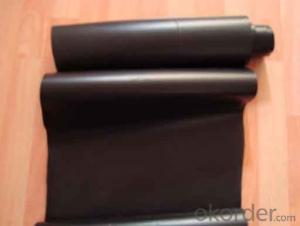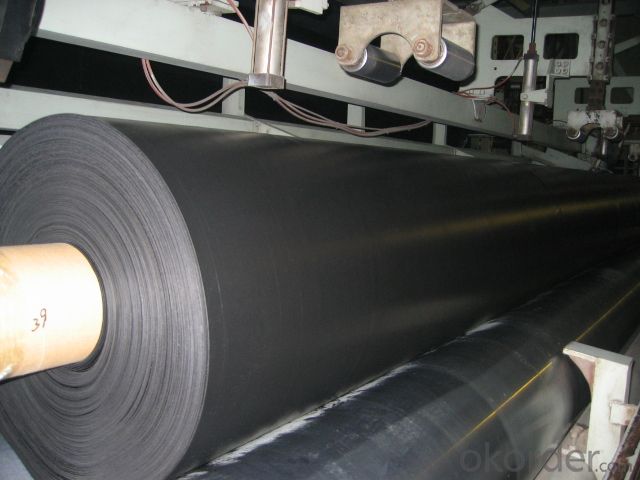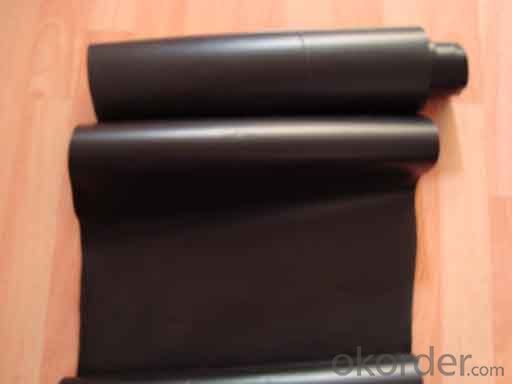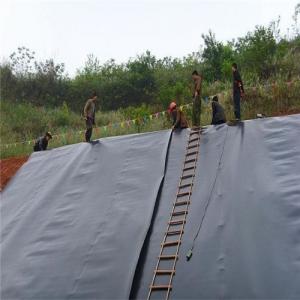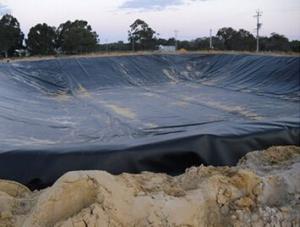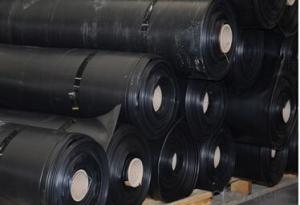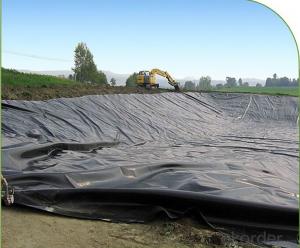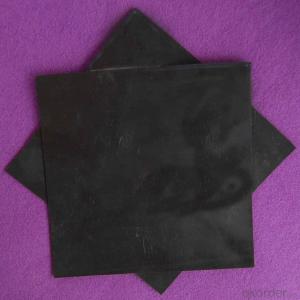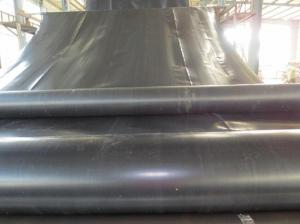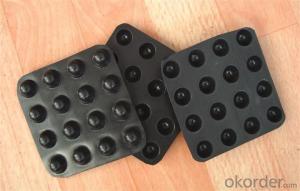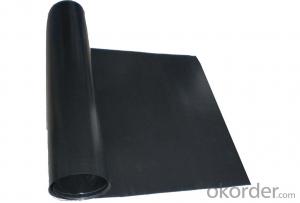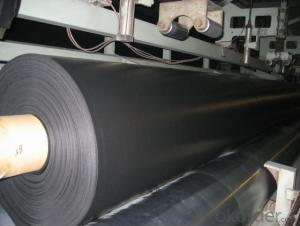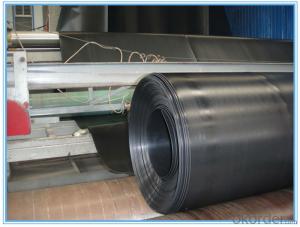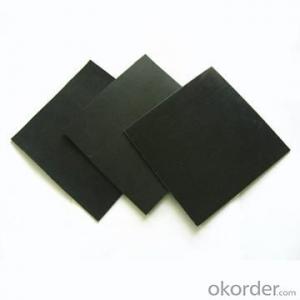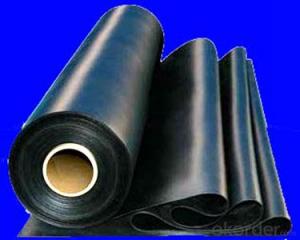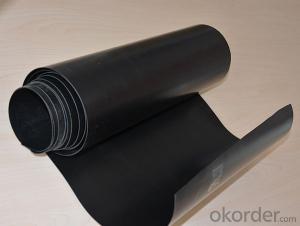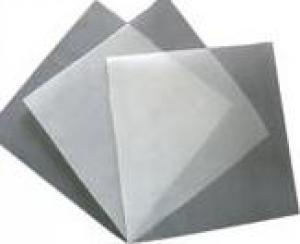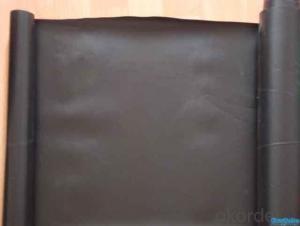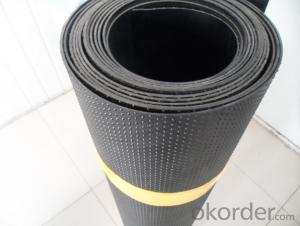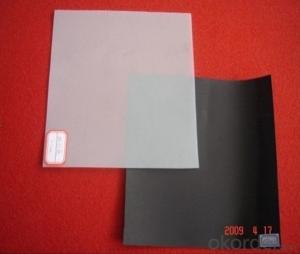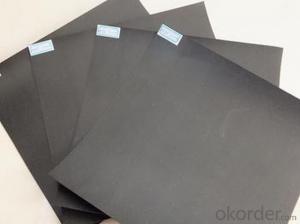HDPE Geomembrane Liner - 0.75mm Antiseepage Material HDPE Geomembrane
- Loading Port:
- China Main Port
- Payment Terms:
- TT or LC
- Min Order Qty:
- -
- Supply Capability:
- -
OKorder Service Pledge
OKorder Financial Service
You Might Also Like
1.Product Description:
1.used in landfill caps.
2.secondary containment for above ground tank farms
3.as well as within various other containment structures such as dams, canals, ponds, rivers and lakes.
Our product was proved as good physical performance, puncture, aging, ultra-violet radiation, oil and salt, alkali and corrosion resistance
, high and temperature resistance, anti-seepage and damp proof effects, complete width and thickness specifications, low cost and simple
construction.
2.Product Characteristic:
1), Environmental protection, sanitation (such as solid waste landfills, sewage treatment plants, power plants Chi-conditioning, industrial, hospital solid waste, etc.) .
2), Water (such as rivers, lakes and reservoirs of the anti-dam, plugging, reinforcement of the canal seepage, the vertical wall of the heart, slope protection, etc.).
3), Mining (washing and pool heap leaching, the ash-field, dissolved, precipitation, the yard, the tailings seepage substrates, etc.)
3.Product Specifications:
1.Thickness : 0.75mm,
2.Length: 50 m -100 m ; width: 1 m -8 m ( according to customer needs )
3.Longth:50-100m(at request)
4.Material: HDPE.
5.Color: Black or as required
4.Reference Picture
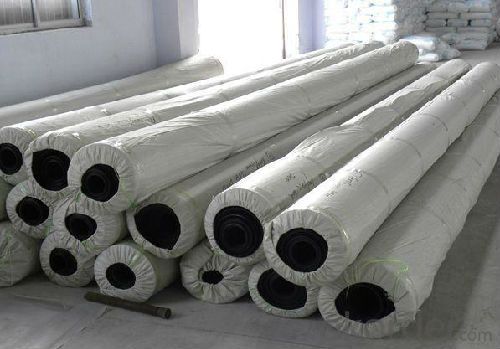
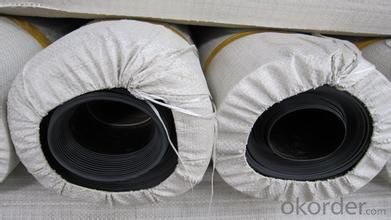
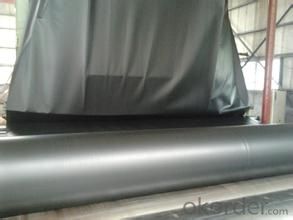
- Q: What's the installation method of the soft film ceiling?
- The installation details of the decorated soft film ceiling: 1. First to go to the site to see if there is a condition of installing the keel: Look at the scene to make sure the wall is completed, and woodworking processing part is qualified, the area that need to be plastered should be completed first. First part plastering carpentry part we proposed must be in accordance with the requirements to do, to advance the processing of.2. entering the construction site conditions Licensor hole size lamp, air outlet, first part is fixed according to the design Aluminum Alloy keel keel carpentry requirements drawing well, attention must be right angle connecting to smooth, flat, dense.3. lamp holder, tuyere, light tube plate to and around the keel level, and firmly cannot swing can smooth.4. smoke, ceiling lamps, the first position to make a wooden frame, wooden frame the bottom surface should be polished, and pay attention to the level of height is too low, it is easy to show a trace of.5. before installing ceiling, carefully check the keel joints are solid and smooth, the spray head to stick on the white tape, an outlet should be well handled. When loading the smallpox to first from the middle to both sides of the fixed, while paying attention to size on both sides and pay attention to welding seam to the final straight angle position, pay attention to smooth. Around the well to the smallpox pruning removes. To perfect income effect on the edge. Turn on the light hole. To mark the position of the lamp hole , and carefully stick the PVC lamp ring carefully and accurately on the bottom of the soft film and then remove the excessive smallpox after it is firm. Find the position of the outlet and the light pipe handicap, just as the surroundings, to install the soft film to the aluminum alloy keel, pay attention to keep the angle be smooth.
- Q: How do geomembranes contribute to the prevention of soil erosion in reforestation projects?
- Geomembranes contribute to the prevention of soil erosion in reforestation projects by acting as a protective barrier between the soil and external forces such as rainfall, wind, or water runoff. They effectively prevent the loss of topsoil, which is essential for plant growth and establishment, by reducing the impact of erosive forces and promoting water infiltration. This helps to retain moisture, nutrients, and organic matter in the soil, creating a favorable environment for the growth of newly planted trees and vegetation. Additionally, geomembranes can also control the flow of water, redirecting it away from vulnerable areas and minimizing the risk of erosion.
- Q: How are geomembranes used in construction projects?
- Geomembranes are used in construction projects as a barrier or liner to prevent the leakage or seepage of fluids, such as water or chemicals, in various applications such as landfills, reservoirs, and containment ponds. They provide a reliable and cost-effective solution to control and manage the flow of fluids, protecting the environment and ensuring the integrity of the construction project.
- Q: Why the drain-pipe below rubber dam base plate is covered with geomembrane?
- Geomembrane, generally refers to water-impermeable material. Geotextiles, generally refers to the permeable material. It is frequently seen that drain-pipe is wrapped with geotextile. It is also seen that the upper part of drain-pipe is wrapped with geotextile, while lower part is wrapped with geomembrane. It is rarely seen that outside the drain-pipe is all wrapped with geomembrane. Because it is more reasonable and convenient that we can use unwrapped tube wall and impermeable tube.
- Q: Are geomembranes suitable for use in golf course construction?
- Yes, geomembranes are suitable for use in golf course construction. These impermeable liners can be used in various applications such as lining ponds, lakes, and streams to prevent water seepage. They provide a reliable and durable solution for maintaining proper water levels and preventing contamination, ensuring the longevity and functionality of golf course infrastructure.
- Q: What are the cost considerations of using geomembranes?
- The cost considerations of using geomembranes include the initial installation cost, maintenance and repair expenses, and the potential for long-term savings. While the upfront cost of materials and installation may be higher compared to other options, such as concrete or clay liners, geomembranes offer durability, longevity, and reduced maintenance requirements. Additionally, the use of geomembranes can prevent the need for costly remediation or containment measures in the event of leaks or contamination, making them a cost-effective choice in the long run.
- Q: The features of HDPE geomembrane
- As a new material, geomembrane has excellent anti-seepage effect, corrosion resistance and chemical stability. And it can process features and functionality according to the actual project needs. Geomembrane has been widely used in water conservancy embankment dam , reservoir seepage. At the same time, it has ben widely used as seepage-proof, anti-corrosion, leakage-proof and non-hygroscopic material in channel, impounding reservoir, cesspit, swimming pool, house building, underground structure, wasteyard, environmental engineering, etc.
- Q: What is the difference between a geomembrane and a geotextile?
- A geomembrane is a synthetic material used for containment and barrier purposes, typically made of impermeable materials like plastic or rubber. It is designed to prevent the movement of fluids or gases and is commonly used in applications such as landfill liners or pond liners. On the other hand, a geotextile is a permeable fabric made from synthetic or natural fibers. It is used for filtration, separation, and reinforcement purposes in civil engineering and construction projects. Geotextiles allow water to pass through while preventing the migration of fine particles, providing stability and drainage in applications like road construction or erosion control. In summary, the main difference between a geomembrane and a geotextile lies in their function and material composition. While geomembranes are impermeable barriers used for containment, geotextiles are permeable fabrics used for filtration and reinforcement.
- Q: How do geomembranes withstand temperature variations?
- Geomembranes are designed to withstand temperature variations through their unique composition and structure. They are made from materials that have a high resistance to temperature changes, such as polyethylene or polyvinyl chloride (PVC). These materials have excellent thermal stability, allowing them to remain durable and flexible across a wide range of temperatures. Additionally, geomembranes are often reinforced with additives and reinforcements that further enhance their ability to withstand temperature fluctuations. This combination of materials and reinforcements enables geomembranes to maintain their integrity and functionality even in extreme hot or cold conditions.
- Q: How do geomembranes contribute to landfill design?
- Geomembranes contribute to landfill design by acting as a barrier to prevent the escape of pollutants from the waste materials. They provide a secure lining system that helps to contain leachate and gas generated by the landfill, preventing contamination of the surrounding environment. Additionally, geomembranes also aid in the stability and structural integrity of the landfill by reducing the potential for erosion and maintaining the integrity of the waste containment system.
Send your message to us
HDPE Geomembrane Liner - 0.75mm Antiseepage Material HDPE Geomembrane
- Loading Port:
- China Main Port
- Payment Terms:
- TT or LC
- Min Order Qty:
- -
- Supply Capability:
- -
OKorder Service Pledge
OKorder Financial Service
Similar products
Hot products
Hot Searches
Related keywords


